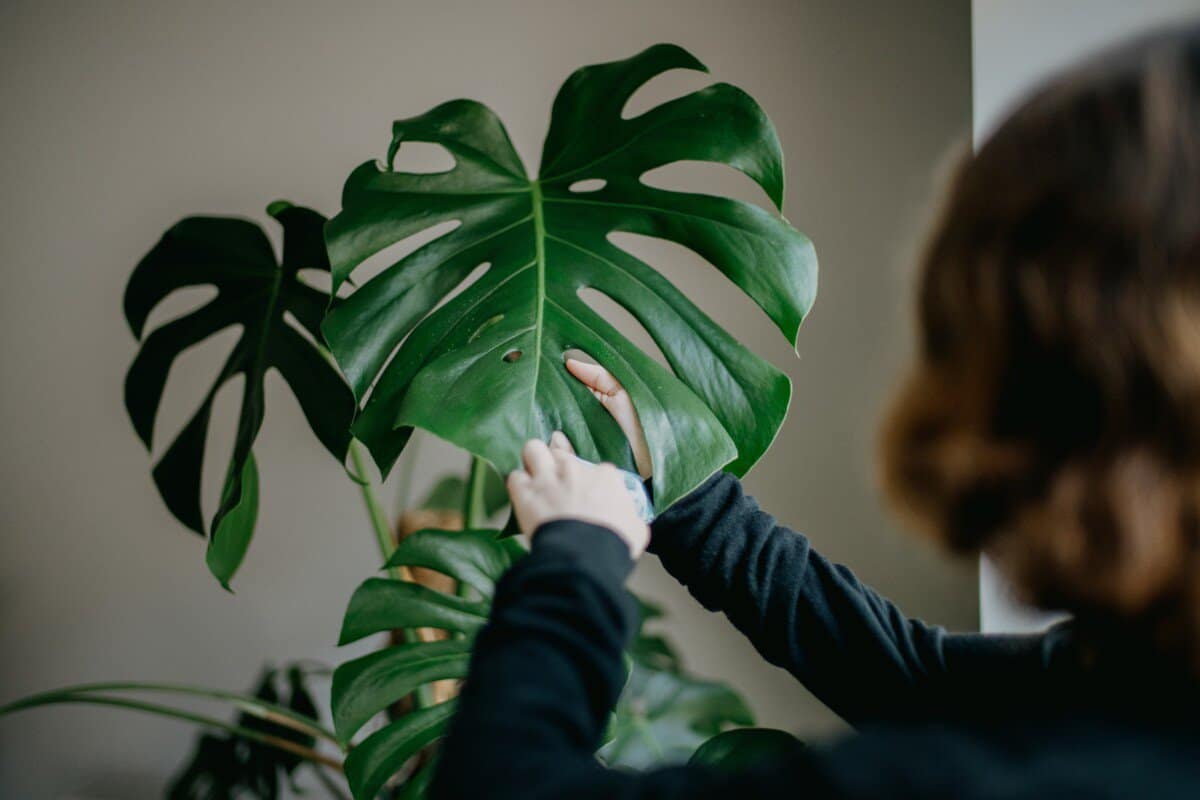In the vibrant world of music, it’s not just about the sound. The environment in which you create can significantly influence the quality of your songwriting. One way to ensure your home music studio nurtures your creativity is by introducing indoor plants into your space.
Adding greenery to your studio does more than just enhance its aesthetic appeal—it also contributes to your overall well-being. Plants are known for their air-purifying qualities, helping to maintain a healthier indoor atmosphere. They can improve humidity, reduce carbon dioxide levels, and even lessen airborne dust levels. Several studies suggest the presence of plants can boost mood and productivity—two crucial elements in the creative process.
However, selecting the right plant for your studio isn’t just about picking the prettiest one. You’ll want to consider factors like light availability, your routine and ability to care for them, and their potential effect on any pets or young children in the home.
In this blog post, we will dive into some of the best indoor plants suited for a home music studio, focusing on their specific benefits, care instructions, and unique features. So whether you’re a seasoned plant parent or a curious novice, this guide will help you pick the right green companion for your creative space.
JUMP TO SECTION
- The Benefits of Having Plants in a Music Studio
- Music Studio Plants Recommendations
- Points to Remember & Potential Concerns
- Harmonizing Your Home Studio with Plants
- Related Questions

THE BENEFITS OF HAVING PLANTS IN A MUSIC STUDIO
When we consider enriching our music studios, our minds often turn towards the latest software, instruments, or soundproofing materials. While all of these are important, introducing indoor plants can offer unique benefits that transform your creative space in profound ways. Here, we highlight three significant advantages: aesthetic appeal, air purification, and mood enhancement.
AESTHETIC APPEAL
Plants have a natural ability to transform spaces. They bring color and life, adding a layer of visual interest that can spark inspiration. Picture the vivid green leaves of a plant juxtaposed against your music equipment—it creates an appealing balance between technology and nature. Whether it’s a tall, elegant snake plant in the corner or a hanging pothos with cascading vines near a window, plants can break the monotony and make your studio feel more vibrant and alive.
AIR PURIFICATION
Indoor air quality is an often overlooked aspect of a healthy studio environment. Did you know that certain plants can help cleanse the air? It’s true. Plants like the spider plant and peace lily are adept at filtering common volatile organic compounds (VOCs) found indoors, leading to cleaner air for you to breathe. While it’s no substitute for proper ventilation, adding air-purifying plants to your studio can complement other methods to improve indoor air quality.
MOOD BOOSTER
Lastly, let’s touch on a less tangible but equally significant benefit—mood enhancement. There’s a reason why plants are a mainstay in numerous office environments and workspaces. Multiple studies have found that the presence of plants can help reduce stress, enhance mood, and improve cognitive function—all vital for a creative endeavor like making music. By bringing a sense of calm and positive energy, plants can contribute to a more productive and creative music studio.
Check out our article Why Many Artists Struggle: The Link Between Sensitivity, Creativity, & Suffering.
Incorporating plants into your studio doesn’t just cater to the senses—it creates a more health-conscious, mood-boosting, and aesthetically pleasing environment. In the next section, we’ll explore some specific plants that can help you experience these benefits.
Music Studio Plants Recommendations
Adding greenery to your home studio is a fantastic idea, but it’s important to select the right plants that align with your space and lifestyle. Here, we’ll introduce eight indoor plants that are suitable for a home music studio, detailing their characteristics, care requirements, and unique benefits.
1. Snake Plant
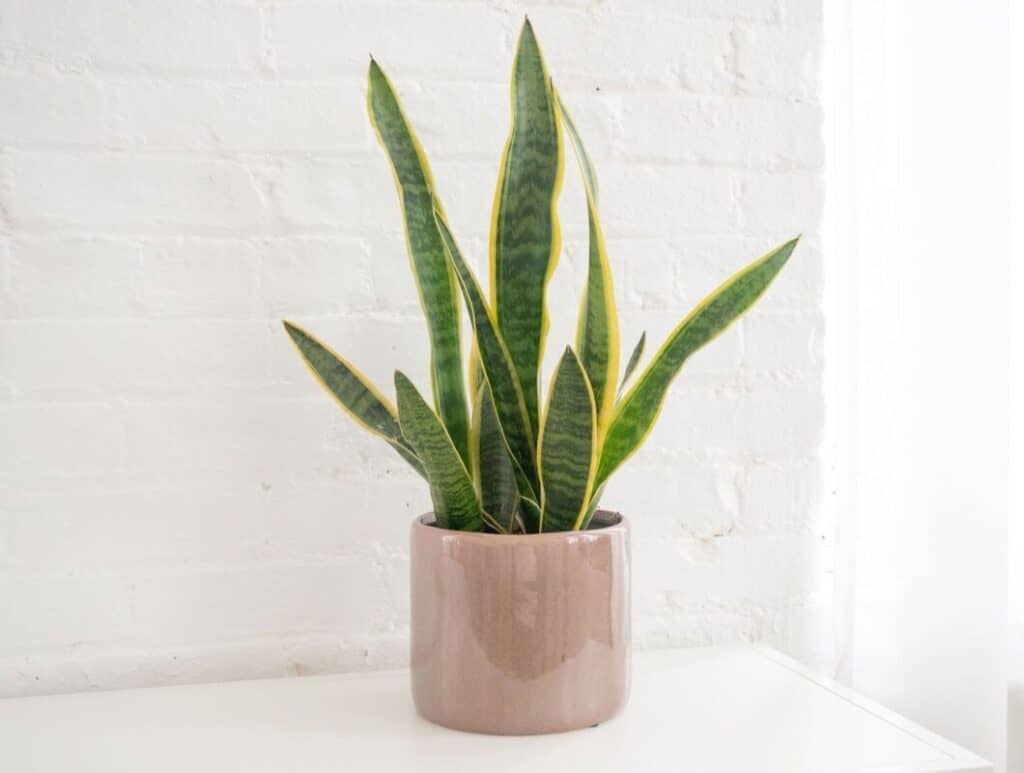
With tall, upright leaves that have striking patterns, the Snake Plant is a hardy choice that requires little attention. It’s ideal for those busy with music-making and who prefer a plant that doesn’t need constant care. Beyond its low-maintenance appeal, the Snake Plant is an exceptional air purifier, known to remove toxins like formaldehyde and benzene from the air.
2. Spider Plant
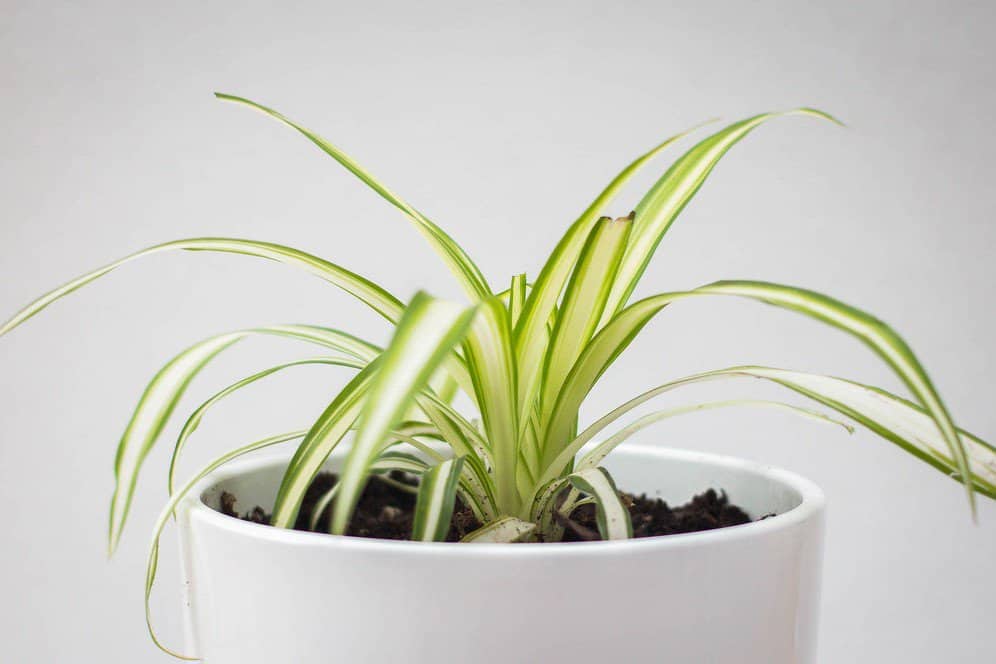
The Spider Plant has an arching form with grass-like leaves that are green with white or yellow margins. This plant thrives in a range of conditions, from bright indirect light to low light, making it quite adaptable to various studio setups. It’s also an excellent choice for air purification, helping to remove harmful substances such as xylene and toluene.
3. ZZ Plant
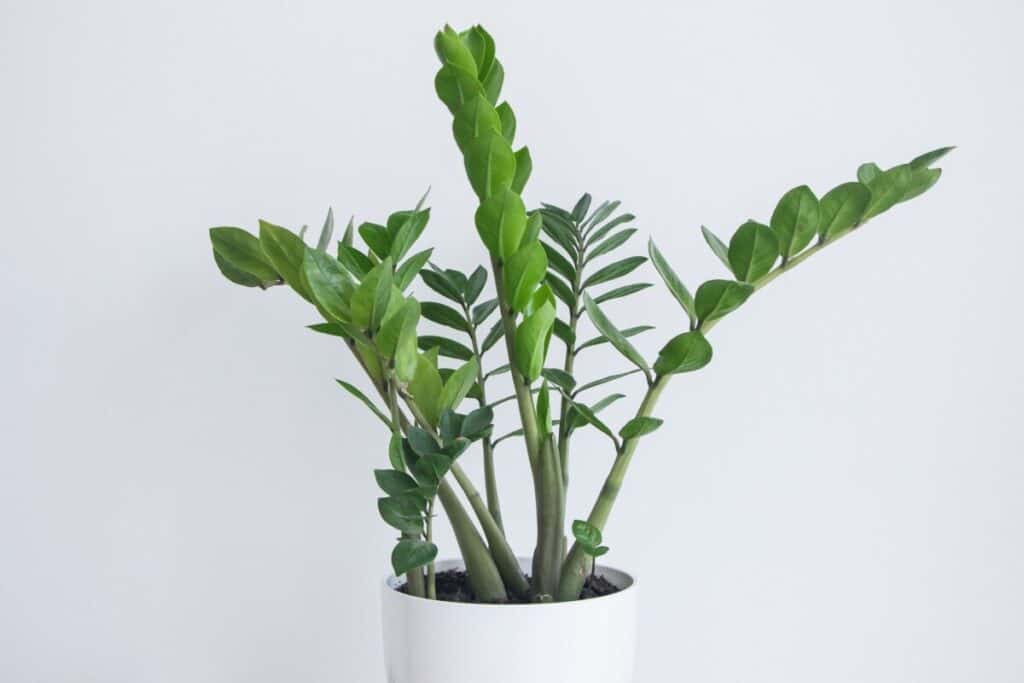
The ZZ Plant offers glossy, dark green leaves and robust nature. It’s drought-tolerant and can thrive even in low-light conditions, making it suitable for studios that lack abundant natural light. Plus, its aesthetic appeal can add an elegant touch to your music studio.
4. Peace Lily

If you’re looking for a plant with a bit of floral flair, the Peace Lily might be for you. This plant is not only beautiful—with its dark green leaves and charming white flowers—but also an impressive air purifier. However, keep in mind that Peace Lilies are toxic if ingested, so they may not be the best choice if you have curious pets or children.
5. Pothos
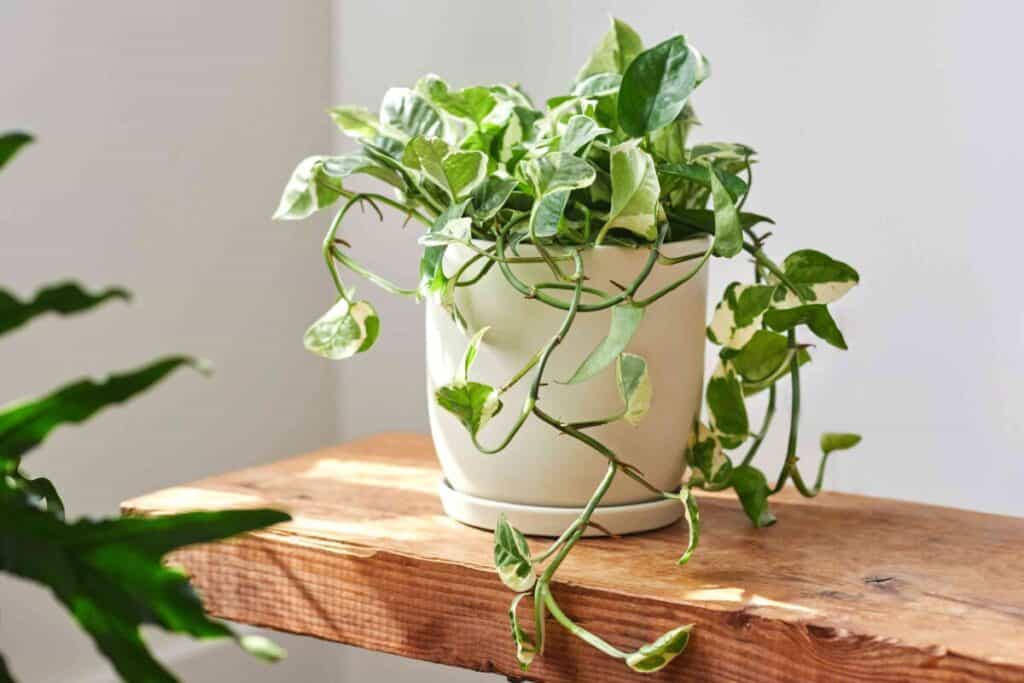
Pothos is a classic indoor plant choice for its trailing vines and heart-shaped leaves. This plant can tolerate a wide range of light conditions and is known for its air-cleaning properties. It’s an excellent choice for adding a cascading element to your studio setup, either from a hanging basket or a high shelf.
6. Rubber Plant
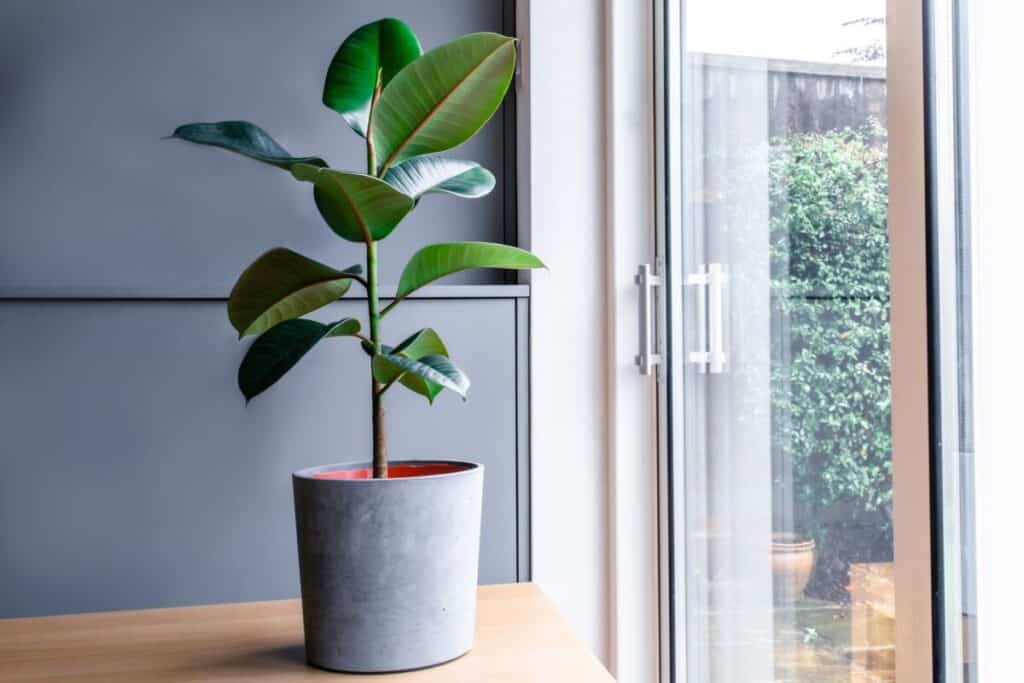
The Rubber Plant brings drama and height to any space. With its large, glossy, dark green leaves, it can be a fantastic statement plant in your music studio. While it likes bright indirect light, it can also tolerate lower light conditions. The Rubber Plant also helps clean the air, but be aware—it can be toxic if ingested.
7. Philodendron
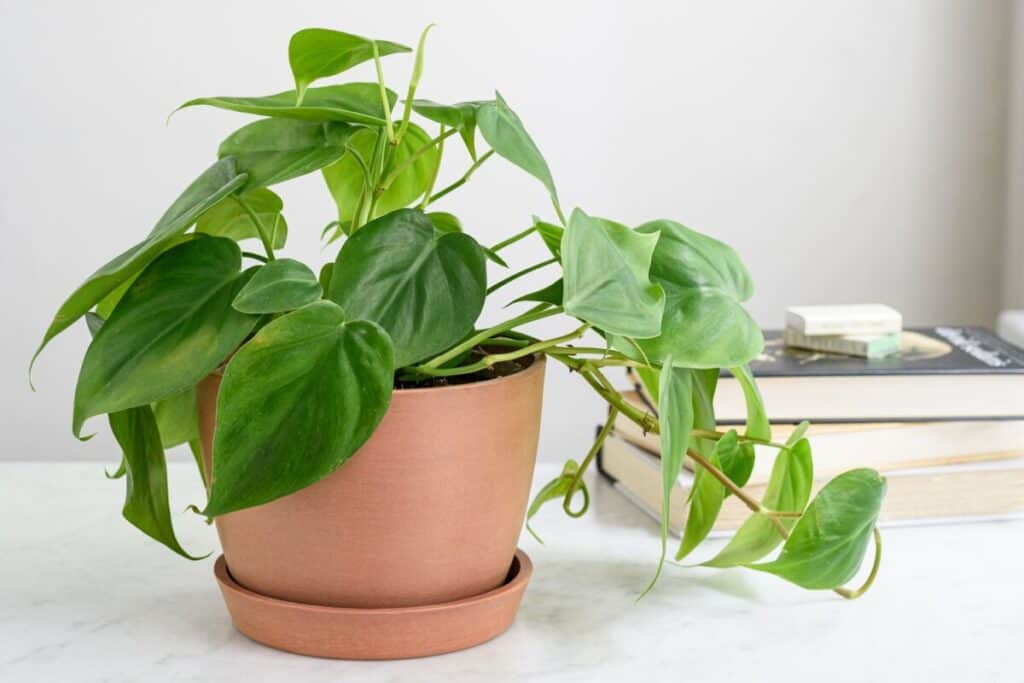
Philodendrons are popular for their versatility and ease of care. With numerous varieties to choose from, you can opt for trailing types like the Heartleaf Philodendron or larger, lusher species like the Philodendron Selloum. Most Philodendrons do well in indirect light and can help in purifying the air, making them a practical and attractive addition to your studio.
8. English Ivy
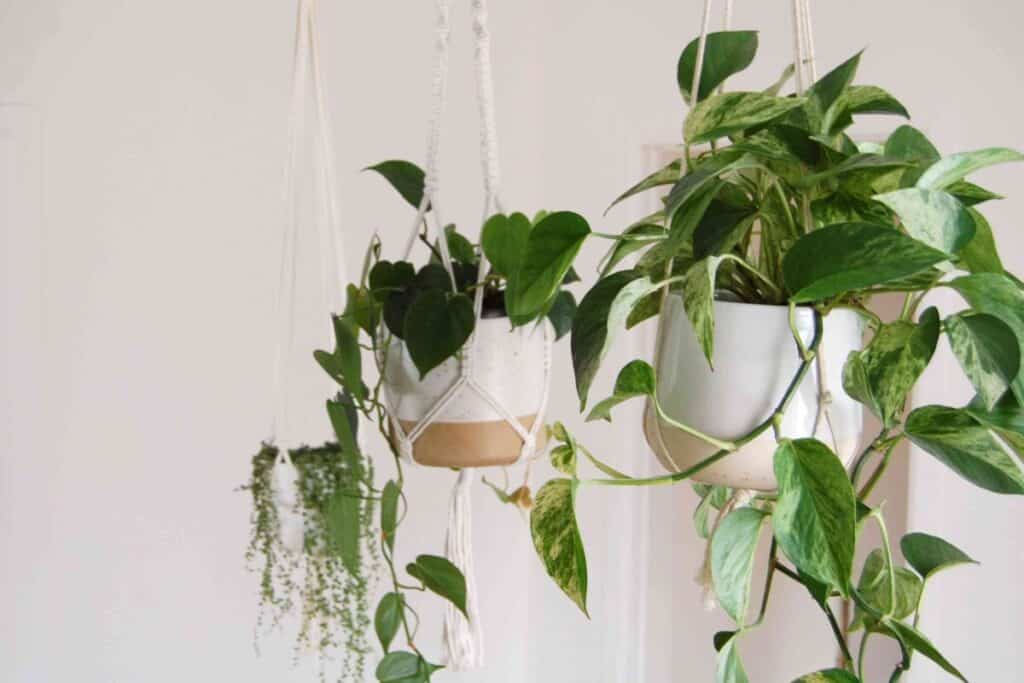
English Ivy, with its climbing or trailing habit, offers a touch of timeless beauty. It’s a great plant to hang from the ceiling or place on a shelf where it can let its vines down freely. English Ivy is also known for its air-purifying abilities, particularly in reducing airborne particles and mold.
Remember, while all these plants are excellent choices, the best one for your studio will depend on your specific conditions and personal preferences. Consider the available light, your routine, and any pets or young children when making your selection.
Points to Remember & POTENTIAL CONCERNS
As you venture to introduce plants to your studio, a few points are worth considering. From potential toxicity to maintenance requirements, let’s break down important factors to ensure your green addition will be beneficial and manageable.
TOXICITY TO PETS OR CHILDREN
A number of indoor plants, while lovely and beneficial for us, can pose a risk to pets or young children if ingested. For instance, the Peace Lily and Rubber Plant, both mentioned in our recommendations, are known to be toxic when consumed. If your home studio is accessible to curious little ones or pets, it’s vital to opt for non-toxic varieties or place potentially harmful plants out of their reach.
ALLERGIC REACTIONS
Plants can sometimes cause allergic reactions in sensitive individuals. Each person’s sensitivities can vary widely, and a plant that is perfectly fine for one person might trigger allergies in another. If you or someone in your household has plant-related allergies, it would be wise to test sensitivity to a specific plant before committing to a larger or more permanent addition to your studio.
REGULAR MAINTENANCE
Let’s not forget that while offering numerous benefits, live plants do demand care. The nature and frequency of this care—from watering and feeding to pruning—vary depending on the plant species. Some, like the Snake Plant and ZZ Plant, are relatively low-maintenance. Others, such as the Peace Lily, may need a bit more of your time and attention. Be sure to choose plants that fit with your routine and level of gardening expertise.
ARTIFICIAL PLANTS
If you find that the maintenance requirements or potential health concerns of live plants outweigh their benefits for you, there is an alternative—artificial plants. Today’s high-quality artificial plants can closely mimic the aesthetic appeal of live plants, minus the care responsibilities and health risks. They can be an excellent choice for those looking to add a touch of green to their studio without additional commitments or worries.
Ultimately, the goal is to create a studio environment that supports your creativity and well-being. Whether you go with live or artificial plants—or a combination of both—choose options that resonate with you and align with your lifestyle.

HARMONIZING YOUR HOME STUDIO WITH PLANTS
As we’ve explored, integrating plants into your home music studio or rehearsal space can offer significant advantages—from aesthetic enrichment and improved air quality to mood enhancement. We’ve journeyed through a diverse selection of indoor plants, each with its unique characteristics and benefits.
Remember, whether you decide on a low-maintenance Snake Plant, an elegant Peace Lily, or opt for high-quality artificial plants, the goal is to foster a harmonious, vibrant space that fuels your creativity. Consider your studio’s light conditions, your schedule for plant care, and the safety of any pets or children that may share the space.
Check out this list of 15 Effective Ways To Support Your Favorite Bands & Musicians.
Adopting green companions in your studio isn’t just about livening up the space—it’s about curating an environment that resonates with your creative energy. By creating this balance, you’re not just making music—you’re cultivating a thriving, inspired ecosystem to support your musical endeavors.
In the spirit of harmony, take the time to choose plants that will be music to your eyes, a breath of fresh air, and a balm to your soul. Your studio is an extension of your creativity—let it grow and flourish with you.
RELATED QUESTIONS
Are there plants that can help reduce noise levels in a home music studio?
While plants cannot significantly reduce noise levels in the way that soundproofing materials can, they can slightly diffuse sound by breaking up the path that sound waves travel along, thereby creating a quieter atmosphere. Larger plants or a wall of plants might have a more noticeable effect.
How can I incorporate plants into a small home music studio?
Even in a small studio, there are creative ways to incorporate plants. Consider hanging plants from the ceiling or placing them on shelves to save floor space. You can also opt for smaller species, like succulents, which can fit on desks or window sills without taking up much room.
How can I make sure my studio has enough natural light for plants?
If your studio doesn’t have enough natural light for plants, you might consider using artificial plant lights, which can help provide the necessary spectrum of light for photosynthesis. Alternatively, choose plants that require low light, such as Snake Plants or ZZ Plants.
What should I do if my plants start to look unhealthy?
Unhealthy plants may show signs such as yellowing leaves, wilting, or stunted growth. First, assess the basics: water, light, and soil. Are you watering correctly, according to each plant’s needs? Is the plant getting the right amount of light? Could the soil be too compact or lacking nutrients? If you can’t identify or solve the issue, consider consulting with a local nursery or extension service.
How often should I water my indoor plants?
The watering schedule for indoor plants can vary greatly depending on the plant species, pot size, light levels, and humidity. Some plants like to dry out completely between waterings, while others prefer consistently moist soil. It’s important to research each plant’s specific needs. A general rule of thumb is to water when the top inch of soil feels dry to the touch.
Can I move my plants around in my studio, or should they stay in one place?
Generally, it’s best to keep plants in a consistent location once they’ve acclimated to it. Frequent changes in light, temperature, and humidity can stress plants. However, if a plant isn’t thriving in its current spot, it may benefit from being moved to a location with conditions better suited to its needs.
For more industry tips and music marketing hacks, check out Ennui Magazine. You can also follow us on Facebook, Twitter, Instagram, Pinterest, and YouTube.
